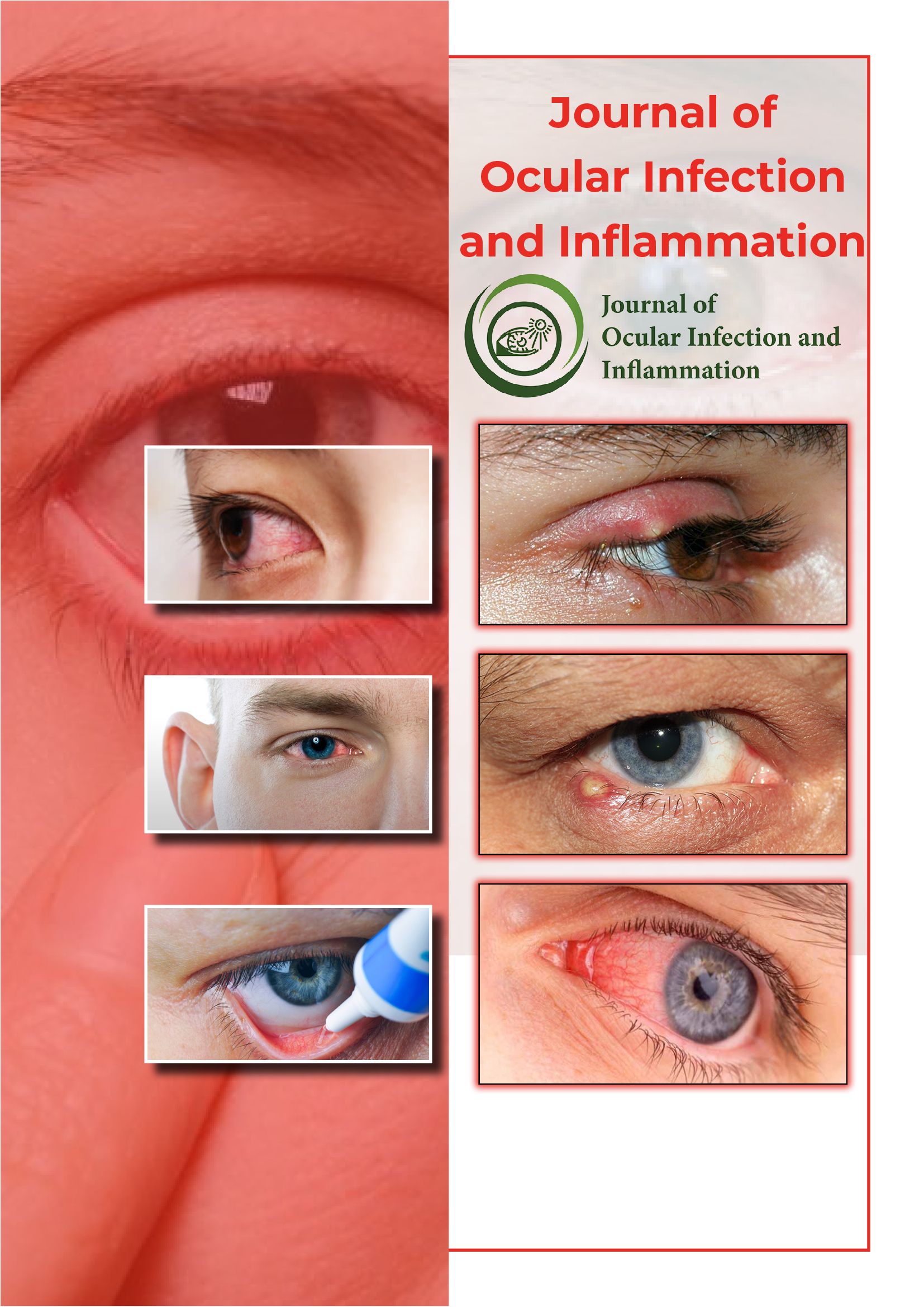Useful Links
Share This Page
Journal Flyer

Open Access Journals
- Agri and Aquaculture
- Biochemistry
- Bioinformatics & Systems Biology
- Business & Management
- Chemistry
- Clinical Sciences
- Engineering
- Food & Nutrition
- General Science
- Genetics & Molecular Biology
- Immunology & Microbiology
- Medical Sciences
- Neuroscience & Psychology
- Nursing & Health Care
- Pharmaceutical Sciences
Commentary - (2023) Volume 4, Issue 1
Overview of Various Bacterial Causes of Ocular Infection
Earon Shukla*Received: 02-Jan-2023, Manuscript No. JOII-23-20975; Editor assigned: 04-Jan-2023, Pre QC No. JOII-23-20975 (PQ); Reviewed: 18-Jan-2023, QC No. JOII-23-20975; Revised: 25-Jan-2023, Manuscript No. JOII-23-20975 (R); Published: 01-Feb-2023, DOI: 10.35248/JOII.23.04.114
Description
Ocular infections, also known as eye infections, are a common condition that can be caused by various bacterial pathogens. Bacteria are microscopic organisms that can enter the eye through different means, such as contaminated contact lenses, unclean hands, or exposure to environmental sources. Once inside the eye, bacteria can multiply and cause a wide range of ocular infections with varying symptoms and severity. In this article, we will explore the different bacterial causes of ocular infections.
Staphylococcus aureus is a gram-positive bacterium that can cause ocular infections, including conjunctivitis and keratitis. The translucent tissue that covers the white of the eye and the inside of the eyelids, the conjunctiva, becomes inflamed and is commonly referred to as pink eye or conjunctivitis. Staphylococcus aureus can cause bacterial conjunctivitis, which is characterized by redness, itching, tearing, and discharge from the eye. Keratitis is an inflammation of the cornea, the clear front part of the eye, and Staphylococcus aureus can be one of the causative agents of bacterial keratitis, which can result in corneal ulcers and vision loss if not promptly treated.
Streptococcus pneumoniae, also known as pneumococcus, is a grampositive bacterium that can cause severe ocular infections, such as endophthalmitis. Endophthalmitis is a rare but serious infection that occurs inside the eye, usually as a complication of eye surgery or trauma. Streptococcus pneumoniae can enter the eye during surgery or through a penetrating eye injury and can cause rapid and severe inflammation of the eye's interior, leading to vision loss if not promptly treated.
Haemophilus influenzae is a gram-negative bacterium that can cause ocular infections, particularly in children. It can cause conjunctivitis and keratitis, and it is also known to be a causative agent of a condition called "pink eye" in children. Haemophilus influenzae can be transmitted from person to person through respiratory droplets, and it can enter the eye through contaminated hands or contact with respiratory secretions.
Pseudomonas aeruginosa is a gram-negative bacterium that can cause severe ocular infections, particularly in contact lens wearers. It can cause a condition called microbial keratitis, which is an infection of the cornea. Pseudomonas aeruginosa is known for its ability to survive in water and moist environments, making contact lens cases, contact lens solutions, and swimming pools potential sources of infection. Pseudomonas aeruginosa keratitis can progress rapidly and can cause corneal ulcers, vision loss, and even blindness if not treated promptly.
Moraxella species are gram-negative bacteria that can cause ocular infections, particularly in individuals with compromised immune systems or chronic conditions such as dry eye syndrome. Moraxella species can cause conjunctivitis and keratitis, and they are known to be opportunistic pathogens, meaning that they can cause infections when the opportunity arises, such as when the eye's natural defenses are weakened.
Neisseria gonorrhoeae is a gram-negative bacterium that can cause a severe form of conjunctivitis called gonococcal conjunctivitis. It is usually transmitted from an infected mother to her new born during childbirth and can cause significant eye discomfort, discharge, and swelling of the eyelids.
Citation: Shukla E (2023) Overview of Various Bacterial Causes of Ocular Infection. J Ocul Infec Inflamm. 04:114.
Copyright: © 2023 Shukla E. This is an open-access article distributed under the terms of the Creative Commons Attribution License, which permits unrestricted use, distribution, and reproduction in any medium, provided the original author and source are credited.

